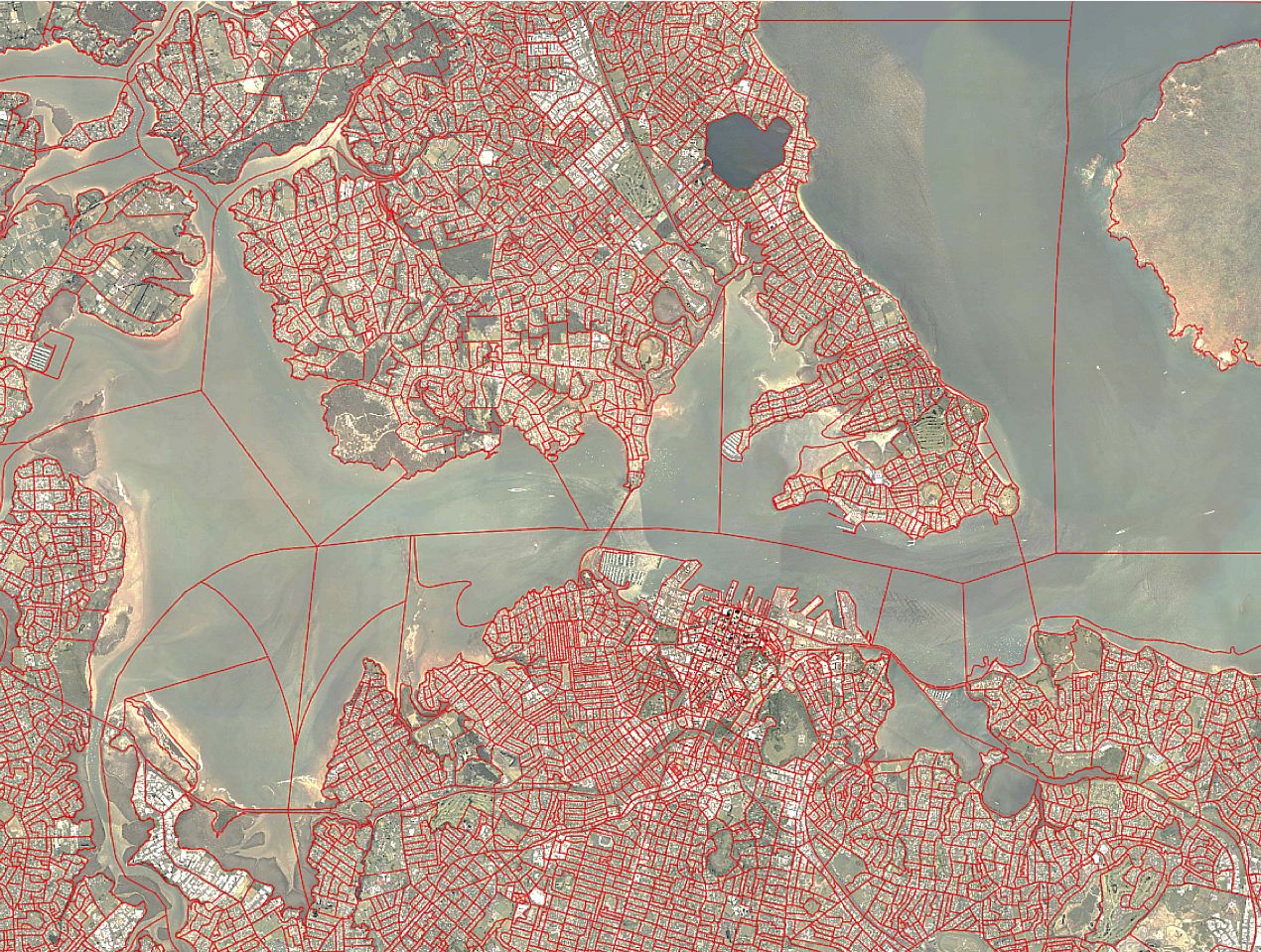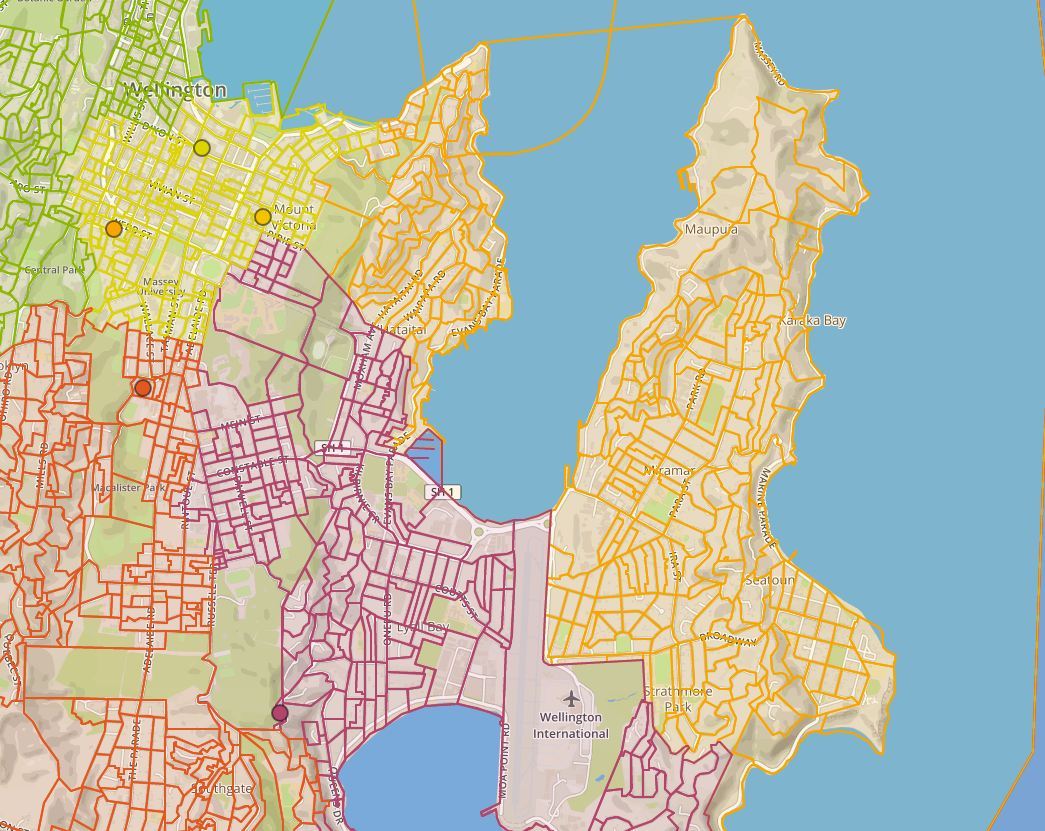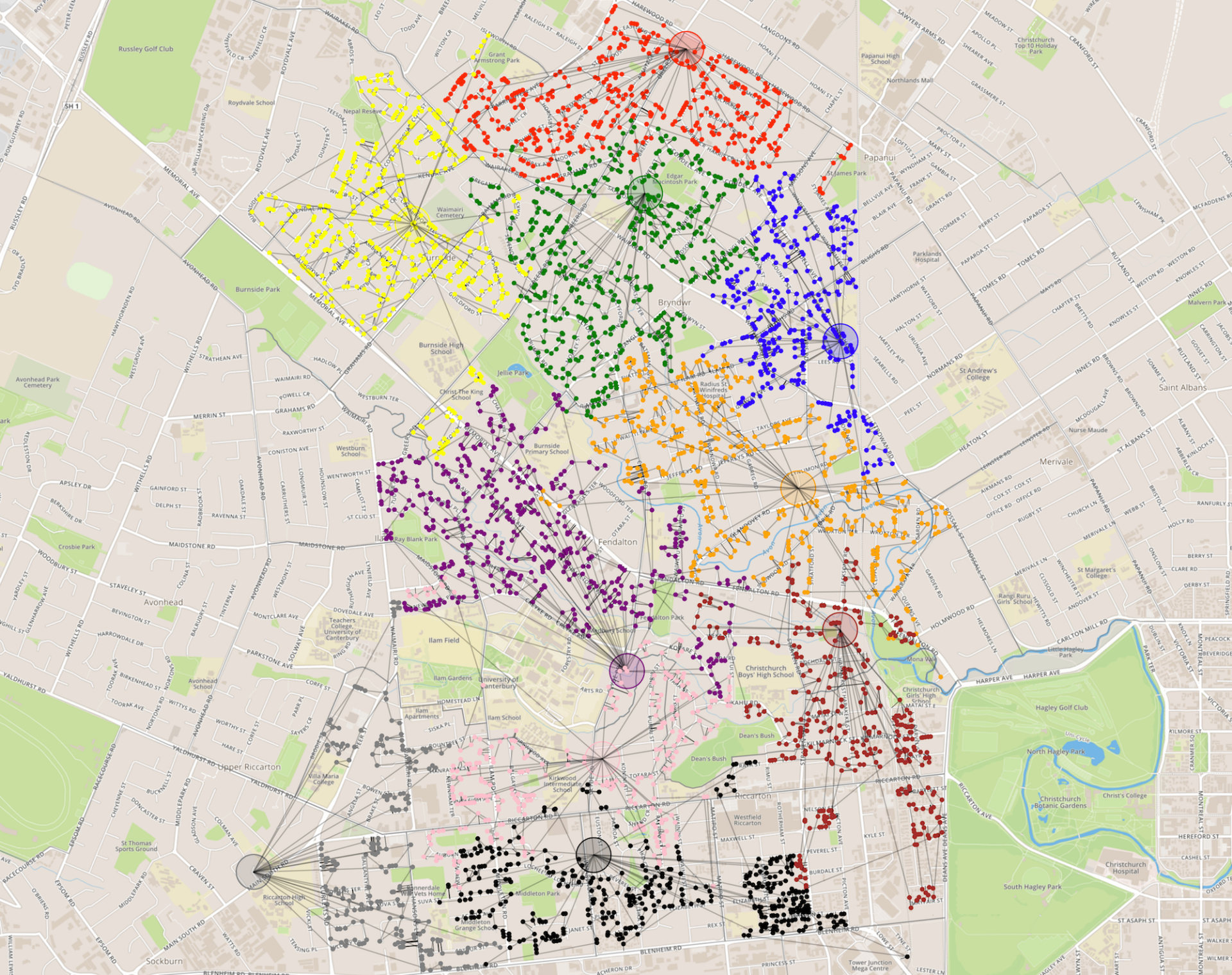
New analytics tools for workload planning for the 2018 New Zealand Census
Associate Professor Andrew Mason, Engineering Science; Geoff Leyland, Incremental Ltd.; Chris Hodgins, John Crequer, Craig Lange, Hayley Gargiulo, Philippa Sowman and Chris Deake, Statistics New Zealand

Meshblocks in the Auckland Region
Background
New Zealand’s next census will take place in March 2018. The census is an official count of all the people and dwellings in New Zealand, and will involve around two-and-a-half-thousand field officers and cover almost two million households. This is a large field operation with officers observing or visiting every dwelling in the country at least once. The operation confirms the locations of known dwellings and identifies new ones to ensure that Statistics New Zealand’s address list is up-to-date.
New Zealand is divided into around 53,000 areas called “meshblocks”. Each meshblock contains roughly the same number of dwellings. The census involves a field officer visiting every dwelling in each meshblock. Additional work may include following up with non-respondents after the census day.
For the first time in New Zealand, the census will use the internet as the primary mode of response. The operation will cover the same geographical area as in previous censuses, but with fewer field officers working across the country. Fieldwork has already begun for the 2018 Census. Over 80% of dwellings were visited between June and August 2017 by a team of over two hundred field officers as part of an operation called “Address Canvassing”. By the time the census gets underway in March 2018, every dwelling in the country will have been observed or visited by one of the teams of field officers, building the most up-to-date record of where people in New Zealand live. In the weeks following the census, households that have not responded will be visited by another team to encourage response in order to ensure the quality of the census findings.
The workload planning tools
Proper planning is critical for efficient census fieldwork. A team consisting of specialists from Statistics New Zealand, Incremental Ltd., and the University of Auckland is building fieldwork planning tools that enable the right officers to go to the right places at the right time. These planning tools form part of a case management system at Statistics NZ which is integrated with mobile devices being used by field officers. The planning tools communicate with these devices to receive information on work that has been completed each day, and to deliver the next day’s plans to field officers. These plans are built using new optimization algorithms developed for this project. The algorithms are dynamic in that new plans are developed each night that respond to the actual work completion rates across field officers.
Planning largely relies on geographical information: the boundaries of the meshblocks; the underlying road network and how it interacts with the meshblocks; the locations of dwellings within the meshblocks; boundaries of area units, and population centres. These are all used to define what needs to happen as part of the census.

Meshblock-based work in Wellington

Dwelling-based work in Christchurch
Application and methodology
Our tools introduce a range of improvements over previous census operations. One of the key innovations in our census tools is the use of a road-network model, and its integration with the meshblock and dwelling models, in order to take actual road distances into account when planning the work. The need to explicitly visit every road in NZ means that the OpenStreetMap data we are using is being tested in ways that are almost certainly new. We have made multiple improvements to the OpenStreetMap maps to fix data errors we have found.
Previous censuses relied on complex GIS processing to determine pairs of meshblocks that share a common boundary, but should not be grouped together because they were separated by geographic features such as rivers and mountain ranges. This processing has been improved and simplified by using new algorithms based on our road network. If a river or mountain range is impassable, there will be no road joining a meshblock pair. If there is a road, then the river or range is passable, and so the meshblocks should be the candidates for grouping together.
New tools require careful testing. All our algorithms have been embedded in detailed simulations, which are tightly coupled with a suite of new visualisation tools. These visualisations have proven invaluable in evaluating and improving the approaches we have developed, and in giving the team confidence that our new algorithms and tools will help lead to a successful 2018 Census Operation.
See more case study projects

Our Voices: using innovative techniques to collect, analyse and amplify the lived experiences of young people in Aotearoa

Painting the brain: multiplexed tissue labelling of human brain tissue to facilitate discoveries in neuroanatomy

Detecting anomalous matches in professional sports: a novel approach using advanced anomaly detection techniques

Benefits of linking routine medical records to the GUiNZ longitudinal birth cohort: Childhood injury predictors

Using a virtual machine-based machine learning algorithm to obtain comprehensive behavioural information in an in vivo Alzheimer’s disease model

Mapping livability: the “15-minute city” concept for car-dependent districts in Auckland, New Zealand

Travelling Heads – Measuring Reproducibility and Repeatability of Magnetic Resonance Imaging in Dementia

Novel Subject-Specific Method of Visualising Group Differences from Multiple DTI Metrics without Averaging

Re-assess urban spaces under COVID-19 impact: sensing Auckland social ‘hotspots’ with mobile location data

Aotearoa New Zealand’s changing coastline – Resilience to Nature’s Challenges (National Science Challenge)

Proteins under a computational microscope: designing in-silico strategies to understand and develop molecular functionalities in Life Sciences and Engineering

Coastal image classification and nalysis based on convolutional neural betworks and pattern recognition

Determinants of translation efficiency in the evolutionarily-divergent protist Trichomonas vaginalis

Measuring impact of entrepreneurship activities on students’ mindset, capabilities and entrepreneurial intentions

Using Zebra Finch data and deep learning classification to identify individual bird calls from audio recordings

Automated measurement of intracranial cerebrospinal fluid volume and outcome after endovascular thrombectomy for ischemic stroke

Using simple models to explore complex dynamics: A case study of macomona liliana (wedge-shell) and nutrient variations

Fully coupled thermo-hydro-mechanical modelling of permeability enhancement by the finite element method

Modelling dual reflux pressure swing adsorption (DR-PSA) units for gas separation in natural gas processing

Molecular phylogenetics uses genetic data to reconstruct the evolutionary history of individuals, populations or species

Wandering around the molecular landscape: embracing virtual reality as a research showcasing outreach and teaching tool
























































































































































